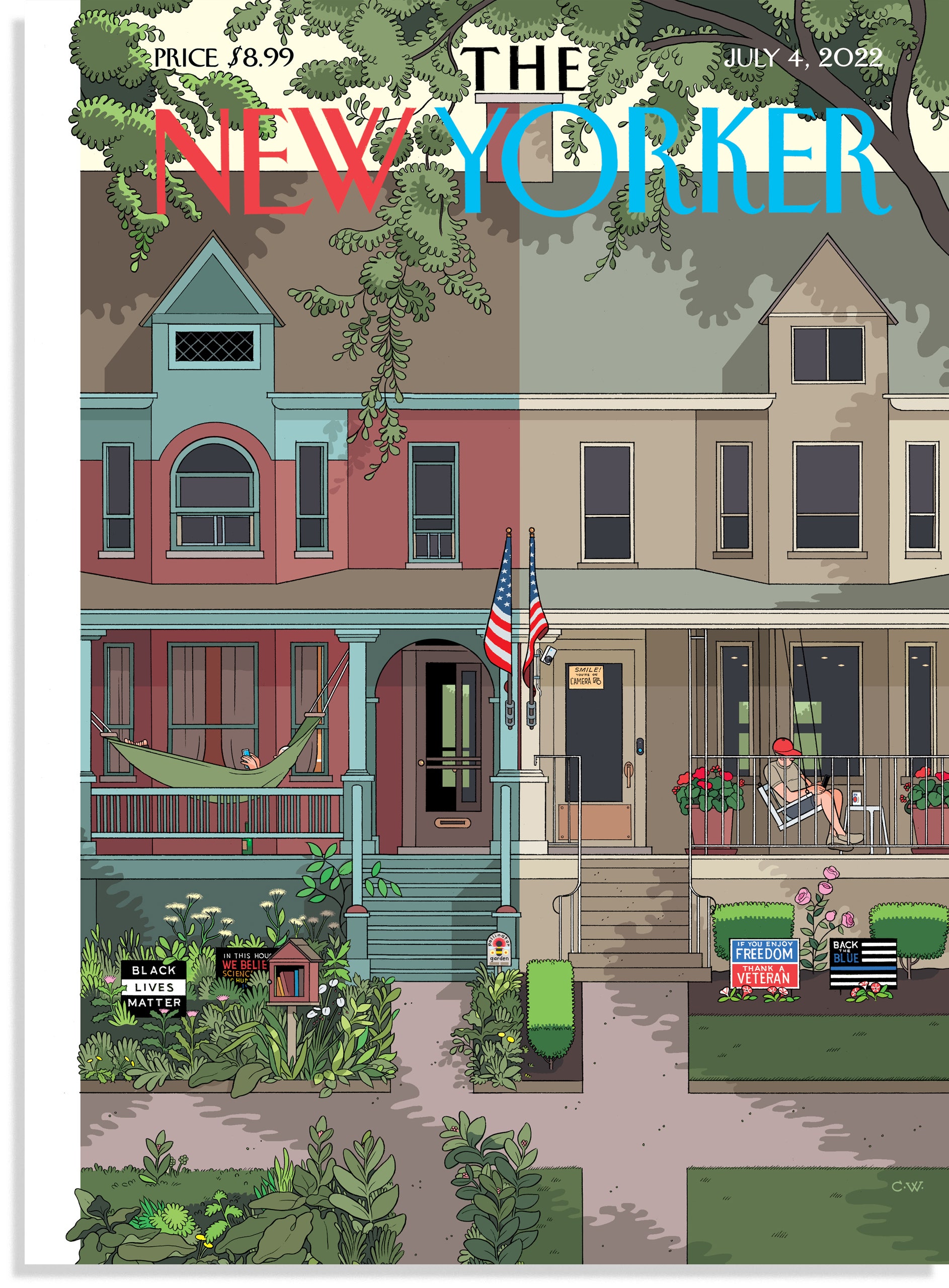I am content with this too. But otoh it feels basically miraculous that the last volume I could read when Miura died ended with the thing everyone has been waiting for finally happening… except for that extra chapter about Griffith’s magical horse ride through the sky lol. I might be happy just leaving Casca and Guts where they ended.
yeah i mean, i totally respect mori and miura’s team wanting to do this and going through with it. mori has basically been left as the sole steward of his dead friend’s intent with a piece of art that was part of both of their lives for decades. wanting to finish it as a way to mourn or pay respects makes a lot of sense to me and i support all of them in doing it.
that said, for me as a reader,
i think this is always gonna feel like where berserk ended
Thanks for this recommendation, really enjoyed it. The final interview in the back revealing that Orson Welles posed for the main character was a nice cherry on top.
i caught up with dungeon meshi. the whole thing is just amazing – super snappy, the characters are adorable, the art, the actually funny comedy. love how the author goes to great lengths to make the rules of the setting work in a fun, dynamic way.
somehow it’s making me want to start playing tabletop RPGs again. the most generic (and common) comparison i’ve seen is that dungeon meshi is “like D&D”, but i think thats wrong. although (sadly!) i never played it, the manga seems to develop more like dungeon world to me. the focus on context and the specific motions of characters vs. the mechanic use of techniques per turn, the very high stakes of combat and the “messy-ness” of how it unfolds.
Lengthy 2007 interview with long-time comics illustrator Al Plastino, who sounds like having been quite the character–he passed away in 2013: An Interview With Al Plastino - A Less Boring Take On Golden Age Superman — Nerd Team 30
Plastino name-drops quite a few Golden Age artists. Two that caught my eye upon looking them up were Jack Sparling–incredibly fast, according to Plastino: capable of doing six daily strips a day! Looking at some of his work, you can see he could sometimes take shortcuts on figuring out poses, but it’s almost hard to see behind his fantastically smooth finishing; and when he did put in the time on a pose, watch out:
Tell it to the Marines #6 p30 (Toby Press, January 1953) - Jack Sparling, in Michael One Minute Later 's Splashes - Golden Age Comic Art Gallery Room
The other that grabbed me was Raeburn Van Buren:
Both 1933 - Art Contrarian: Raeburn van Buren: Second-Echelon Cartoonist
1958 - Yesterday’s Papers: Remembering Raeburn Van Buren
]_]
I had read Long Halloween but had only just read Dark Victory for the first time in the last year and they were really good and Tim Sale was legend. RIP
This manga is actually pretty funny, I started reading it on a whim lately and I feel like it’s got some good jokes. Also I am always amused by everyone’s “that is painfully cute” face:
oh but GIANT caveat that there’s some real weirdness with characters who are older but stuck in the bodies of very young girls. I was like 75 chapters deep before they actually confirmed the age of one of the characters was like, 8. So that’s pretty damn gross!
Someone put Chris Ware out to pasture
EDIT: just to rant a bit more on this relatively niche topic – I, like a lot of people, worshipped Ware for a period. I actually never loved his big graphic novels (Jimmy Corrigan), his earlier Quimby the Mouse work and other shorter form comics remain remarkable. I don’t really care that he’s stagnated (arguably regressed) over 20 years, that’s expected. What I do care is he and some of his 90s-era “indie comic” peers failed to nurture and provide stewardship to a new generation (now 2+ generations removed) of cartoonists. Note that Ware’s career would never exist without Raw and Art Spiegleman (who, despite all his faults, did organize and promote young cartoonists for a period). To see him (via Francois Mouly, Art Spiegleman’s wife) pumping out these awful sub-editorial cartoon new yorker covers year after year (esp the post-Roe cover), covers that could go to someone half his age and four times as invigorated, is just obnoxious.
this is also bad because it makes me feel thoroughly owned, as lefty scum currently trying to get rid of the lawn and fill the yard with big leafy native plants
the one big acme novelty library with all the short pieces in it was one of my favourite comics for a long time. i think i gradually dropped off bc the feeling i got from every subsequent longer book was that… his pessimism was ultimately kind of shallow… like whatever the merits are of pessimism per se i think ideally you’d want a stronger version of it than “ah, life would have been better if i’d only gotten together with my crush in high school”. but gradually this seemed like the serial problem of not just the characters but also of his own imagination - that it didn’t really find much of value in the existing “normal” structures, but was still too sentimentally tied to an idea of there being a “normal” baseline of happiness and goodness to ever really push for something else (imaginatively, aesthetically, etc) and found the idea of anything too far away from that baseline to be kind of irredeemably gauche. even the obvious pleasure in constructing and making and seeing things new is kind of disavowed as the echo of a past age, when all these activities were supposedly more normal.
i always think of a part from one of his comics where a lady is browsing somebody’s bookshelf and flipping through nabokov and joyce and going “all these books are about perverts and crazy people… where are the great works about just normal life…?”. and it’s sort of mocking her but also sort of a nudge that in fact the very book we’re reading is full of not only modernist devices but also lotsa “normality”, panels of people moving the laundry around and so on, with nary a pervert or crazy person in sight (phew!!). and i mean… what a weird sad ambition, to be a joyce but with the weird parts crossed out… and it makes it kind of inevitable feeling in retrospect that he’d end up just kind of circling the drain of whatever mildly prestigious middlebrow institutions are left. fellas, hear me out: what if nabokov was a nice and normal guy who accepted all the new yorker’s style guide edits? wouldn’t that be, uh, better?
It’s actually kind of remarkable how thoroughly that picture does capture the left/right home decor divide
So glad I somehow avoided letting Building Stories into my home, imagine having to live with this fucking bullshit, fucking hell
Robert Mankoff would never
Ware desperately needed a co-writer 20+ years ago (I’d say editor but there are no editors in comics). His value was always his unparalleled skill at melding comics formalism, graphic design, and typography + fastidiousness (…well he used to be fastidious). But he has literally been telling the same story since he was an undergrad student (miserable person living their miserable life with regrets but also denial).
His early, short-form work holds up because you can feel the energy of him discovering new things, regardless of how miserable the content may be. There’s no energy or joy in his work since like the mid-2000s, despite or because of how refined it is. He has no interesting content to fill the vessel of his formalism, so the formalism swallowed him instead. I’d say he has also been placated by his success, but dude was pretty placated even before Jimmy Corrigan came out.
note that this is pure projection, Ware has weirdo undertones a la robert crumb. Check out ware’s sketchbooks, tons of ogling young women, though in his “im just a smol beanheaded cartoonist” way. he’s very self conscious about his public image, attempting to teeter on the edge of “respected worlds greatest cartoonist” and “i must reveal the inner workings of the mind, warts and all” but never just diving deep into his real uninhibited weirdo nature the way his literary influences (like joyce) did. This carefully protected and childish insecurity directly translates to the fisher price dollhouse nature of his cartooning style. There’s a lot of personal repression in his work that he just grazes on but never breaks through.
I mean the lib half is clearly and objectively aesthetically superior, no shame necessary
Ware’s rad as a graphic artist but I never was really rushing to read any of that stuff.
This was a fun thing to check out from the library and look through, though. That’s what I did.









